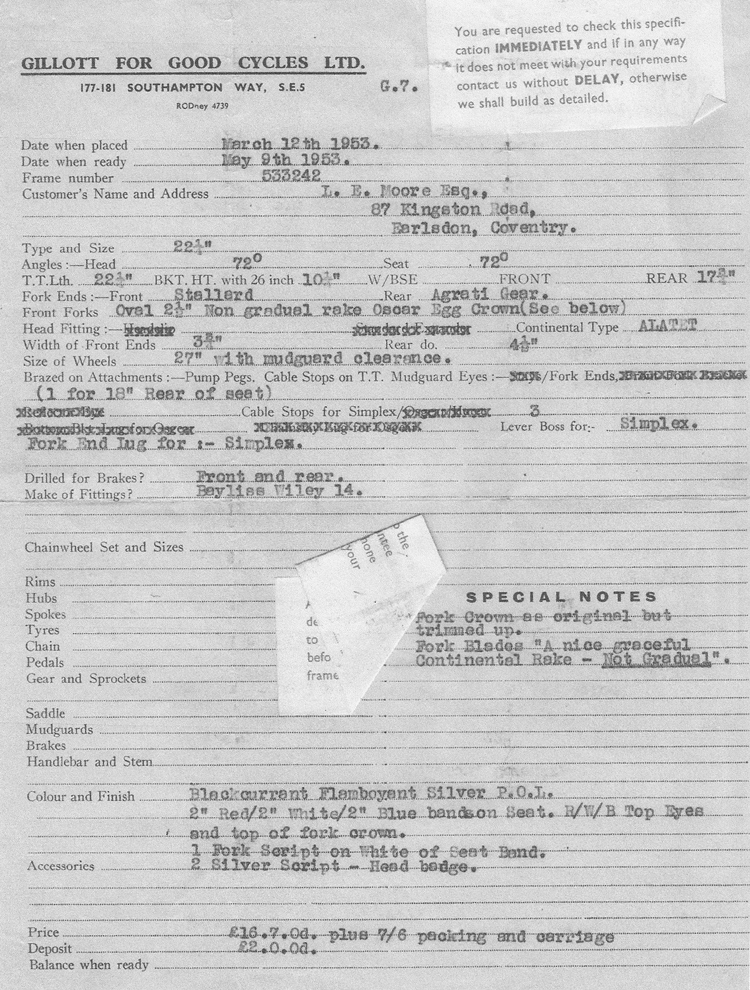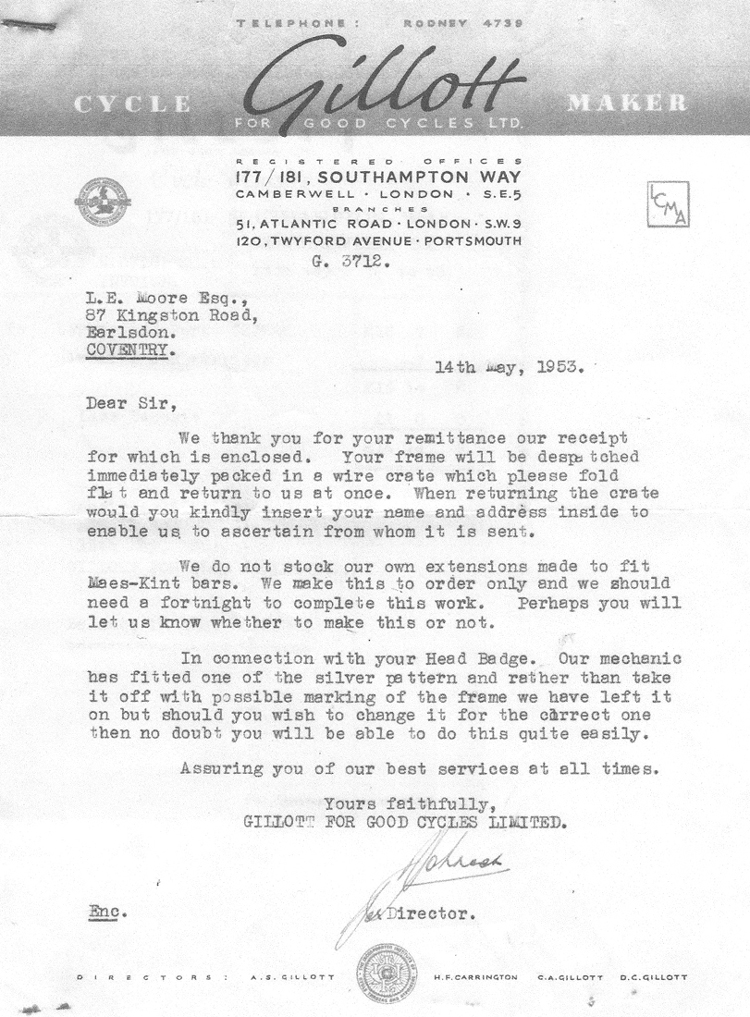Gillott, A S - The Post-War Years
Posted: Thursday 21st May 2020
In 1948 the Olympics were held in London and the Herne Hill cycle track saw a lot of the action. The British team won a bronze medal in the team pursuit, Alan Geldard and Dave Ricketts riding for GB were both on Gillott ‘track irons’.
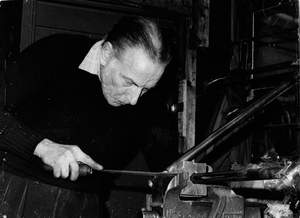
At this time Harry invested in a batch of brass enamelled headbadges. At 2/6d each they were very expensive and the enamel was prone to chipping. By 1951 these were all used up and at this point the familiar pressed aluminium badge took over. I believe that prior to 1949 the ’roundel’ – often used instead of a headbadge by those who wanted to save the ounces – had 179 Southampton Way Camberwell SE5 on it (in fact Nick Tithecott at Lloyds Cycles now supplies these, which are correct for pre-1949 restorations).
Gillott script 250The next head badge had Southampton Way, London SE5 on it which reflected the fact that 177, 179 and 181 were all in use. No.181 was a corner shop and used as the showroom, it is now a launderette. The small ‘Gillott’ script fork transfer appeared around 1949 as well as the script down tube transfer which was the only style available at this time. The block transfer A.S.GILLOTT I believe was introduced in the 1960’s, possibly when the company was bought by Edwardes (more on that later)
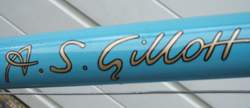
As with many other builders, business peaked around 1950-1 and by late 1951 over 2500 frames had been built. Five frame builders were employed at the peak, Jim Collier, Bill Philbrook, Len Hart, Len Truman, George Holt and Ron Cooper. I say five because Ron had been conscripted to do his National service in the RAF where he rode for the RAF cycling team. Most of the employees were racing men, as was the case with many cycle companies in this era. Ron was in the London Team in the 1952 Tour of Britain but he had a serious crash on Stage 12 – Scarborough to Nottingham – suffering a double fracture of his arm which meant that this was to be the end of his racing career.
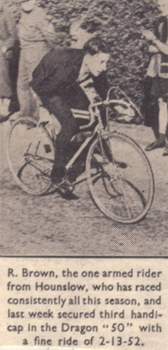
Another character in the shop, Ron Brown, had only one arm. He had lost it at the age of three (I don’t know how). In spite of this he was a formidable racing man and had the knack of wrapping parcels and building bikes literally ‘single handed’.
With the end of petrol rationing in 1953 the roads began to fill up with smelly noisy smoke belching things and so the ‘Golden Age’ of cycling was eclipsed. Gillott’s carried on thanks to a loyal clientele and a fine reputation for
quality. The frames were finely made, the emphasis being on craftsmanship in all their catalogues. There was no piece work, unlike many of the London builders. Each builder had as much time as needed to make sure the best quality was delivered. No freelancers were used and Harry insisted that no frames were built for other shops apart from one for Buckleys. Harry kept a strict eye on things: he had a degree table in his office and each frame was personally checked for truth, angles, braze-ons etc. The enamellers were James Grey and Sons (part of Claud Butler’s empire) just down the road and Harry was often down there playing hell if something wasn’t ‘just’ right. In fact he paid them an extra 1/- per frame to apply a second coat of lacquer.
”The Cycle Maker for the Connoisseur”
”Quality tells in every frame by Gillott”
”Gillott for Good cycles”
”Handbuilt by craftsmen”
These are quotes from sales leaflets and catalogues and these qualities are reflected in the appearance of the frames. Hilary Stone once told me had never seen a bad Gillott (a proper one that is, but more on that later too).
If I tell you that Arther Stephen Gillott was a stonemason prior to WW1 and a lay preacher and bell ringer, often coming into work in a frock coat, you won’t be surprised if I say that I think he and some of the others at Gillott’s were Freemasons. Hence the insistence on quality and craftsmanship.
Tom Plowman sent in some examples of Gillott paperwork from the 50’s
Posted: Thursday 21st May 2020
This article appears in the following categories.
Upcoming Events
Whether you are looking for a gentle social meet up, or a 100-mile ride browse the community’s upcoming events and plan your next weekend outing.


